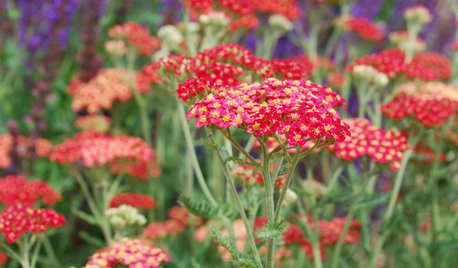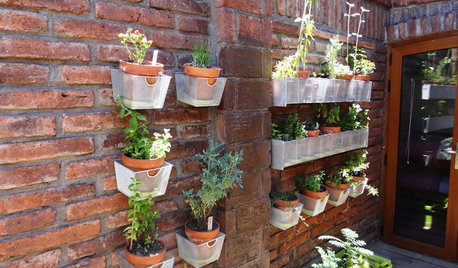worm tea attempt...roses and herbs?
shesoldier
14 years ago
Related Stories

GARDENING GUIDESTexas Gardener's February Checklist
Show roses some love around Valentine's Day and set the stage for future garden growth with seeds and starts
Full Story
GARDENING GUIDES10 Easy Edibles for First-Time Gardeners
Focus on these beginner-friendly vegetables, herbs, beans and salad greens to start a home farm with little fuss
Full Story
FEEL-GOOD HOME21 Ways to Waste Less at Home
Whether it's herbs rotting in the fridge or clothes that never get worn, most of us waste too much. Here are ways to make a change
Full Story
FARM YOUR YARDHouzz Call: Home Farmers, Show Us Your Edible Gardens
We want to see where your tomatoes, summer squashes and beautiful berries are growing this summer
Full Story
EDIBLE GARDENSHouzz Call: Where Are the Craziest Places You Grow Edibles?
Basil in a bathtub, spinach stacked up a wall ... If your edibles occupy an odd spot, we’d like to know
Full Story
FARMHOUSESHouzz Tour: A Farmhouse Branches Out
New windows and a dining room addition help a Northern California home thrive right along with its bounteous garden
Full Story
GARDENING GUIDESWhat Are Your Spring Gardening Plans?
Tearing out the lawn? Planting edibles? Starting from scratch? Tell us what you plan to change in your garden this year
Full Story
LIFESlow Living 101: Tips for Turning Off the Chaos
It may feel as though you're too busy to slow down and enjoy life. But even little changes can have a big effect
Full Story
EDIBLE GARDENSHow to Grow Your Own Sweet Summer Crops
This guide will help any gardener get started on growing the freshest warm-season veggies and berries for summer
Full Story
GARDENING FOR BUTTERFLIESGardening for the Bees, and Why It’s a Good Thing
When you discover how hard bees work for our food supply, you may never garden without them in mind again
Full StoryMore Discussions






leearnold
shesoldierOriginal Author
Related Professionals
Washington Landscape Architects & Landscape Designers · Gainesville Landscape Contractors · Bedford Heights Landscape Contractors · Hicksville Landscape Contractors · Newberg Landscape Contractors · Siloam Springs Landscape Contractors · South Lyon Landscape Contractors · Cottage Grove General Contractors · Holly Hill General Contractors · Medford General Contractors · Mount Prospect General Contractors · Rancho Santa Margarita General Contractors · Stoughton General Contractors · Texas City General Contractors · Uniondale General Contractors